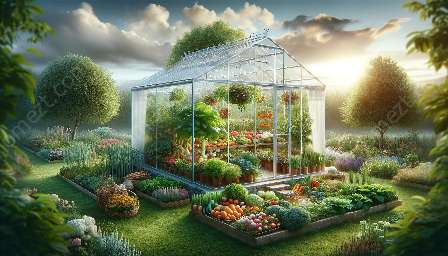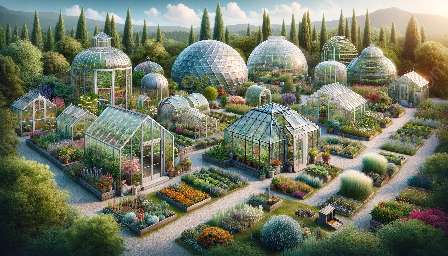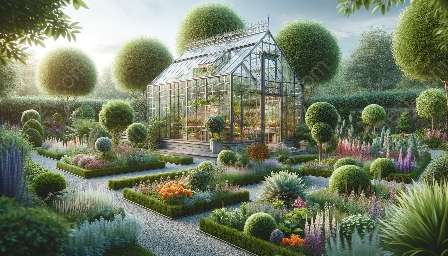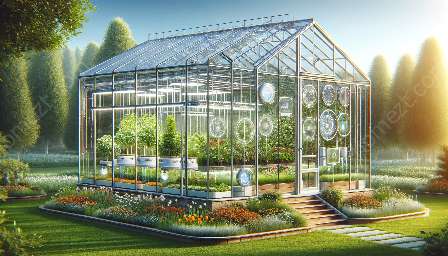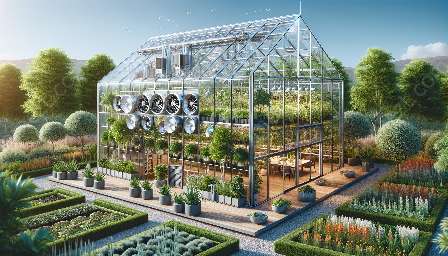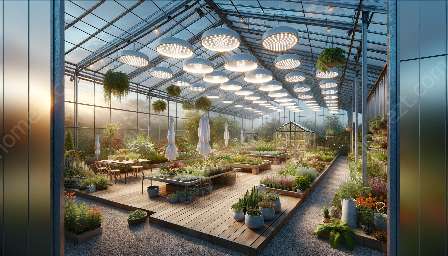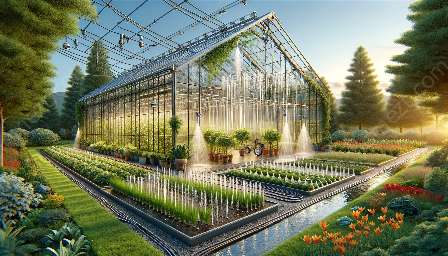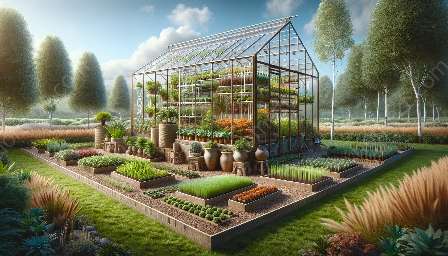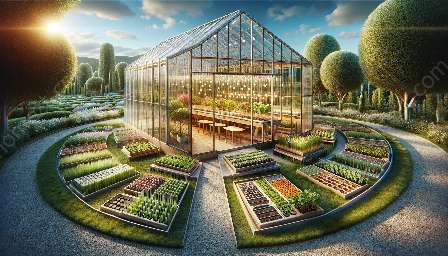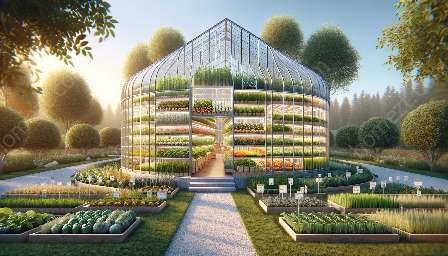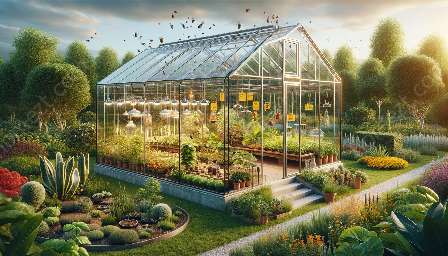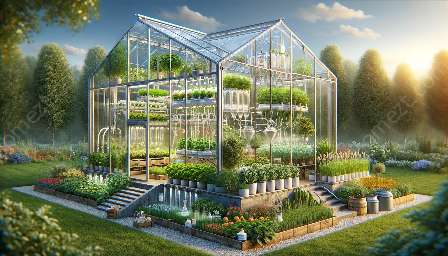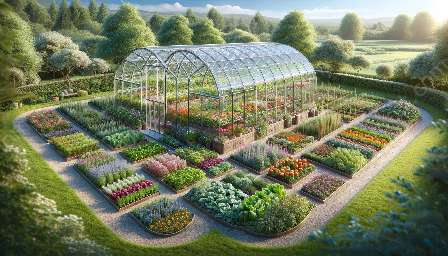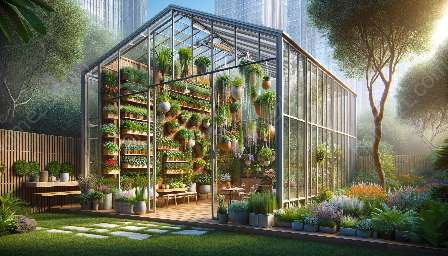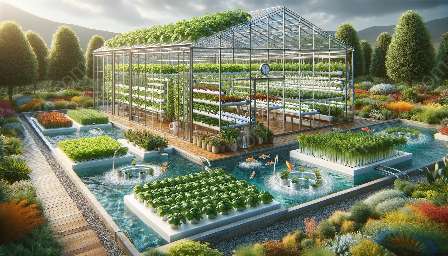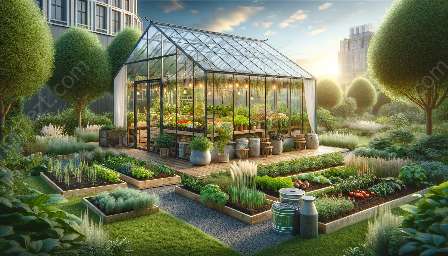Greenhouse gardening offers a controlled environment for growing plants, but effective watering and irrigation techniques are essential for success. This topic cluster about watering and irrigation in a greenhouse provides detailed explanations, tips, and best practices for gardeners and landscapers interested in greenhouse cultivation.
Understanding Greenhouse Gardening
Before delving into watering and irrigation, it's important to understand the basics of greenhouse gardening. Greenhouses provide a regulated environment that allows for year-round cultivation, protection from adverse weather, and control over growing conditions such as temperature, humidity, and light. In a greenhouse, plants are typically grown in containers, raised beds, or directly in the ground, and the watering and irrigation practices must be tailored to this unique environment.
Basic Watering Principles in Greenhouse Gardening
One of the fundamental principles of watering in greenhouse gardening is to provide plants with the right amount of water at the right time. Overwatering can lead to root rot and other diseases, while underwatering can cause stress and reduced growth. Gardeners need to consider the specific needs of each plant species, taking into account factors such as its stage of growth, root structure, and environmental conditions.
Traditional Hand Watering
Hand watering can be effective for small-scale greenhouse operations or when dealing with a small number of plants. However, it can be time-consuming and labor-intensive, especially in larger greenhouses. When using this method, gardeners should ensure that water is evenly distributed and that the soil or growing media is adequately moistened without becoming waterlogged.
Drip Irrigation Systems
Drip irrigation is a popular watering technique in greenhouse gardening. This method involves a network of pipes and tubing with emitters that release water directly to the root zone of each plant. Drip irrigation helps conserve water by minimizing evaporation and runoff. It also ensures that plants receive a consistent supply of water, promoting healthy growth and reducing the risk of diseases caused by overhead watering.
Fogging and Mist Systems
Fogging and misting systems are commonly used in greenhouses to maintain optimal humidity levels and provide supplemental water to the plants. These systems release fine droplets of water into the air, creating a mist that envelops the plants. This technique is particularly beneficial for humidity-loving plants and can help prevent dehydration during hot weather.
Advanced Watering Technologies for Greenhouses
With advancements in technology, greenhouse owners and managers can incorporate sophisticated irrigation systems to optimize water usage and plant health. These technologies include:
- Automated Irrigation Controllers: These devices can be programmed to deliver precise amounts of water at scheduled intervals, taking into account factors such as plant type, soil moisture levels, and environmental conditions.
- Capillary Mats and Wicking Systems: These systems use capillary action to draw water from a reservoir and distribute it to the plant roots. They are particularly useful for ensuring uniform moisture levels in container-grown plants.
- Soil Moisture Sensors: These sensors measure the moisture content of the growing medium and provide data that can be used to fine-tune irrigation schedules, preventing both under- and overwatering.
Tips for Successful Greenhouse Watering
To achieve optimal results in greenhouse gardening, consider the following tips:
- Monitor Plant Needs: Regularly assess the moisture requirements of different plant species, adjusting watering schedules as needed based on their individual needs.
- Use Quality Water: Ensure that the water used for greenhouse irrigation is of good quality and free from contaminants that could harm the plants.
- Implement Water-Saving Practices: Adopt water-efficient irrigation systems and techniques to minimize waste and maximize the use of available water resources.
- Prevent Disease and Pests: Overly wet or humid conditions can promote the growth of pathogens and pests. Practice good watering hygiene to minimize these risks.
- Consider Recycling Water: Where feasible, implement strategies for collecting and reusing water within the greenhouse to reduce consumption and waste.
Conclusion
Effective watering and irrigation techniques are crucial for successful greenhouse gardening. By understanding the specific needs of plants, implementing appropriate watering methods, and leveraging advanced technologies, gardeners and landscapers can optimize water use, promote healthy plant growth, and achieve exceptional results in their greenhouse cultivation endeavors.

